Top 5 Enterprise CMS Platforms (2025)

As technology evolves, having a strong Enterprise Content Management System (CMS) is essential. A reliable CMS helps businesses manage digital content efficiently, boosting customer engagement and driving digital transformation. With the growing volume of content, scalable, secure, and flexible CMS solutions are key to staying competitive.
The right CMS allows businesses to manage content like blogs and videos while offering scalability, security, and easy integration with other tools. We will review review the top 5 CMS platforms based on these factors, helping you choose the best solution to enhance your content strategy.
Overview of Enterprise CMS Platforms
An Enterprise Content Management System is a sophisticated platform to manage and facilitate content creation, modification, distribution, and organization across digital channels. Unlike traditional CMS tools for smaller websites or bloggers, enterprise CMS solutions meet the complex demands of large organizations. These platforms offer advanced features supporting extensive content databases, complex workflows, multilingual sites, and high customizability for businesses operating globally.
Enterprise CMS platforms seamlessly integrate with business systems like Customer Relationship Management (CRM), Enterprise Resource Planning (ERP), and marketing automation tools, enabling streamlined operations, better data insights, and cohesive user experiences. They're designed for scalability, allowing businesses to grow their digital footprint without constraints. Whether expanding digital assets, accommodating increasing traffic, or extending functionality, an enterprise CMS adapts to evolving business needs.
Let's analyze the top 5 enterprise CMS platforms - their histories, key features, strengths, and limitations. This examination will equip businesses to make well-informed selections harmonizing with their content management requirements and goals.
Adobe Experience Manager (AEM)
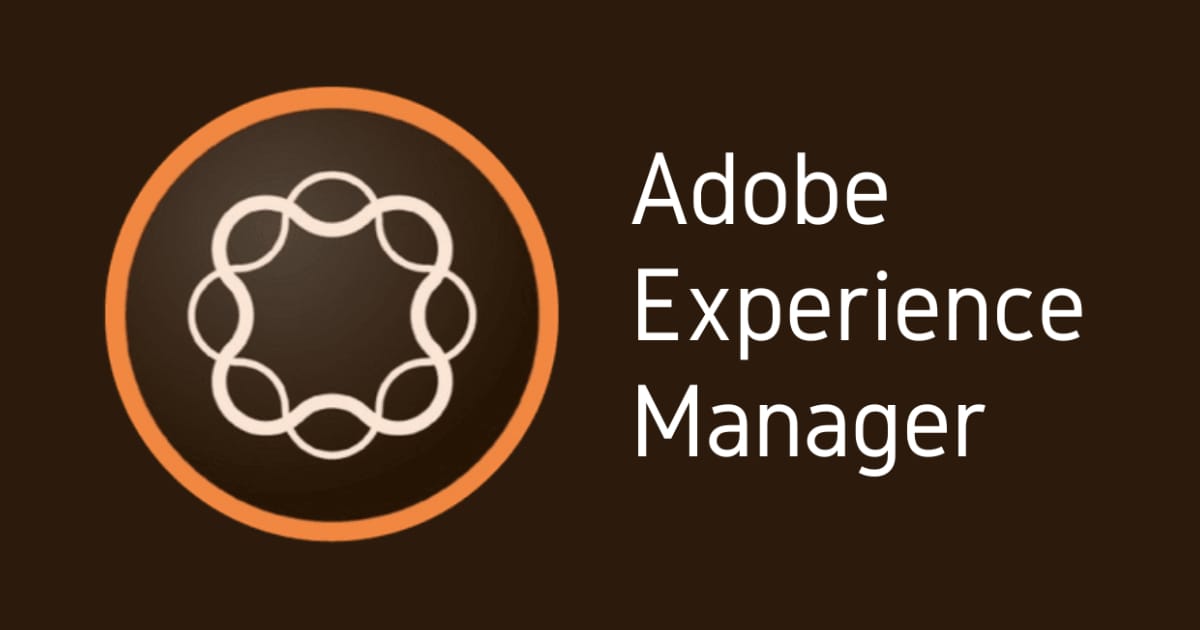
Overview and History
Adobe Experience Manager (AEM) is a comprehensive content management solution for building websites, mobile apps, and forms. Developed by Adobe Systems, it combines digital asset management with the power of a content management system. Since its inception as CQ5 in 2010, after Adobe's acquisition of Day Software, AEM has evolved significantly. Its primary goal is to provide marketers and IT professionals with an agile and flexible platform for delivering engaging digital experiences across various channels. AEM's capabilities include web content management, digital asset management, and the creation of digital forms. Over the years, Adobe has continuously updated AEM to integrate with other Adobe products, like Adobe Analytics and Adobe Marketing Cloud, enhancing its utility in digital marketing and content management. This integration facilitates a seamless workflow for content creation, management, and optimization, making it a preferred choice for large enterprises seeking to maintain a compelling online presence.
Key Features and Services
Adobe Experience Manager (AEM) offers a wide range of key features and services designed to help businesses manage their digital content and create personalized customer experiences. Here are some of its standout capabilities:
- Web Content Management (WCM): AEM provides a powerful platform for creating, managing, and delivering dynamic and personalized web content. It supports responsive design, ensuring content looks great on any device.
- Digital Asset Management (DAM): The DAM feature organizes, stores, and retrieves digital assets like images, videos, and documents, making it easy for teams to find and use them across various projects.
- Mobile App Development: AEM allows for the creation and management of mobile apps, offering features like content synchronization and app updates without needing to redeploy the app.
- Forms Management: Businesses can create and manage digital forms, streamlining processes like onboarding and registrations. AEM Forms simplifies the integration of form data with existing systems.
- Personalization: AEM Sites and AEM Assets offer personalization capabilities, allowing businesses to tailor digital experiences based on user behavior, preferences, and data.
- Cloud Services: AEM as a Cloud Service offers a scalable, cloud-native CMS, ensuring businesses can deliver content faster and more efficiently with automated updates and scalability.
- Integration with Adobe Creative Cloud and Adobe Marketing Cloud: This integration facilitates seamless workflows between content creation, management, and marketing analytics, enhancing the efficiency of digital marketing campaigns.
Fees and Pricing Structure
Adobe Experience Manager (AEM)'s fees and pricing structure can vary widely depending on several factors, including the scale of the deployment, the specific features and services required, and whether the organization opts for an on-premise solution or the cloud service model. Adobe typically customizes pricing based on the customer's specific needs, making it difficult to provide a one-size-fits-all figure. Here's a general overview of what influences AEM's pricing:
- Deployment Model:
- AEM Sites and AEM Assets: Pricing for these core services can depend on the volume of content and digital assets managed, as well as the number of users.
- Cloud Service: Adobe offers AEM as a Cloud Service, which follows a subscription model. This model might include a monthly or annual fee, scaling with usage and the level of service required.
- Modules and Features: AEM's modular structure means pricing can vary based on which components (e.g., Sites, Assets, Forms) a business needs. More complex features or integrations with other Adobe products can also affect the cost.
- Support and Updates: Adobe offers different levels of support and maintenance plans, which can impact the overall pricing. Higher levels of support, offering quicker response times and more direct access to experts, will be more costly.
- Training and Implementation: The cost of implementing AEM can be significant, especially for large, complex deployments. Training for staff to effectively use AEM can also add to the initial costs.
For accurate pricing, Adobe recommends contacting their sales team directly. They can provide a tailored quote based on an organization's specific requirements and help understand the total cost of ownership, including any initial setup fees, annual or monthly subscription costs, and potential charges for additional services or support.
Pros
- Comprehensive Solution: AEM offers a wide range of features, including web content management, digital asset management, and forms management, making it a one-stop solution for digital experience management.
- Scalability: It's highly scalable, suitable for large enterprises and can handle increasing amounts of data and traffic seamlessly.
- Integration Capabilities: AEM integrates well with other Adobe products and third-party systems, enhancing workflow and data usage across marketing, analytics, and creative domains.
- Personalization: Advanced personalization capabilities allow businesses to tailor content and digital experiences to individual users, improving engagement and conversion rates.
- Cloud Service: AEM as a Cloud Service offers the benefits of cloud computing, including reduced IT overhead, improved scalability, and automatic updates.
Cons
- Cost: AEM can be quite expensive, with pricing that may be prohibitive for small to medium-sized businesses. The total cost of ownership includes licenses, implementation, training, and ongoing support.
- Complexity: Its comprehensive nature and wide range of capabilities can lead to a steep learning curve. Efficient use of AEM often requires specialized knowledge and training.
- Resource Intensive: AEM can require significant server resources, especially for large-scale deployments. This can lead to higher running costs and the need for a robust IT infrastructure.
- Customization Challenges: While AEM is highly customizable, developing custom features can be complex and may require experienced developers familiar with AEM's architecture.
- Implementation Time: Setting up AEM, especially for customized solutions, can be time-consuming, impacting time to market for digital initiatives.
Companies using AEM
- Cisco Systems
- Nvidia
- Verizon
- AT&T
- Lumen Technologies (formerly CenturyLink)
- Cox Communications
- BET (Black Entertainment Television)
- Barnes & Noble
- Wall Street Journa
- HBO
Sitecore
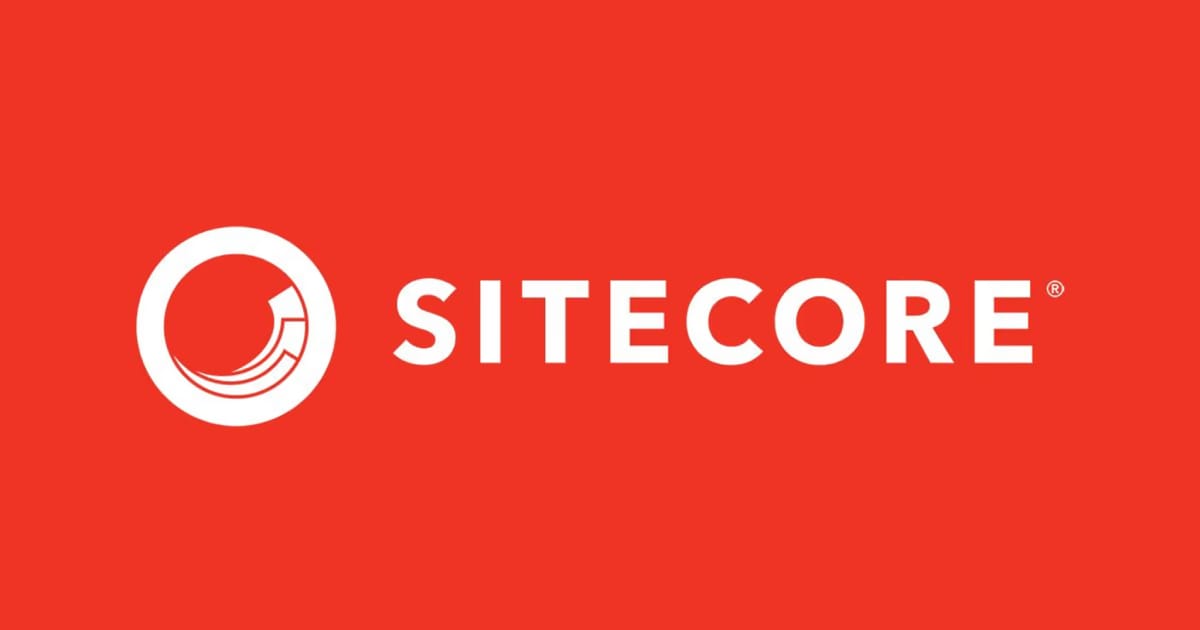
Overview and History
Sitecore is a leading digital experience platform (DXP) that enables organizations to manage digital content and create personalized experiences across various channels. Founded in 2001 in Denmark by Michael Seifert, Thomas Albert, and Peter Christensen, Sitecore started as a content management system (CMS) but evolved into a comprehensive DXP, integrating content management, digital marketing, and commerce capabilities. Its core features include web content management, digital marketing tools, and e-commerce solutions, aimed at enhancing customer engagement and driving digital transformation. Over the years, Sitecore has expanded its offerings through innovation and acquisitions, such as the purchase of Moosend, a marketing automation platform. Today, it serves a wide range of industries worldwide, helping businesses to deliver seamless and personalized digital experiences to their audiences.
Key Features and Services
Sitecore's platform is rich with features and services designed to empower businesses in crafting compelling digital experiences. Here are some of its key offerings:
- Web Content Management (WCM): At its core, Sitecore provides robust content management capabilities, allowing users to create, manage, and publish content across multiple platforms with ease, ensuring consistency and relevance.
- Experience Platform (XP): This includes powerful tools for tracking and managing customer interactions across various channels, enabling personalized content delivery and customer experience optimization based on real-time data and insights.
- Commerce: Sitecore Commerce integrates with its digital experience platform to offer seamless e-commerce solutions, facilitating personalized shopping experiences that can drive sales and customer loyalty.
- Marketing Automation: Sitecore includes marketing automation tools that allow businesses to design, automate, and measure campaigns across channels, improving efficiency and effectiveness in engaging with customers.
- Experience Database (xDB): A centralized database that collects and connects customer data from all touchpoints, providing a comprehensive view of the customer journey and enabling deep insights for personalized engagement strategies.
- Cloud Services: Sitecore offers cloud-based hosting and services, ensuring scalability, security, and high availability for websites and applications, enabling businesses to focus on creating exceptional user experiences without worrying about infrastructure.
- Personalization and A/B Testing: With advanced personalization features and A/B testing capabilities, Sitecore enables marketers to tailor the digital experience for different segments of their audience, testing and refining strategies to maximize engagement and conversion.
- Multilingual and Multisite Management: It supports multilingual content and multisite management from a single platform, making it easier for global organizations to manage their digital presence across different regions and languages.
Fees and Pricing Structure
Sitecore's fees and pricing structure can be complex and highly dependent on the specific needs and scale of a business. The pricing typically varies based on factors such as the number of sites, user licenses, features required, and the level of support needed. Here's a general breakdown of how Sitecore's pricing can be structured, though specific costs would require a direct quote from Sitecore or an authorized partner:
- License Fees: Sitecore's licensing model is primarily based on the number of instances and the scale of the digital experiences you plan to deliver. The platform might charge for core CMS capabilities, with additional costs for advanced features such as personalization, commerce, and marketing automation.
- Subscription vs. Perpetual Licenses: Sitecore offers both subscription-based and perpetual licenses, giving businesses flexibility in how they budget for the software. Subscription licenses are typically annual and include maintenance and support, whereas perpetual licenses involve a one-time fee with an annual maintenance and support cost.
- Cloud Hosting: If opting for Sitecore's cloud services, there will be additional fees for hosting, which can vary based on the required storage, bandwidth, and the level of service (e.g., managed services vs. self-service).
- Implementation and Customization Costs: Implementing Sitecore can involve significant costs for customization, integration with other systems, and deployment, which are usually managed by Sitecore partners or certified developers.
- Training and Support: Sitecore offers various levels of support and training, which can affect the overall cost. Businesses might need to budget for onboarding, training programs, and ongoing support to ensure they maximize their investment in the platform.
Given these variables, the cost of using Sitecore can range from tens of thousands to hundreds of thousands of dollars annually, making it important for businesses to carefully assess their needs and discuss them with Sitecore or a certified partner to get an accurate quote. It's also worth noting that Sitecore periodically updates its pricing and licensing models, so checking the latest information directly with the company is advisable.
Pros
- Comprehensive Digital Experience Platform: Sitecore offers a wide range of features, including content management, digital marketing, e-commerce, and personalization, all integrated into a single platform. This comprehensive approach enables businesses to deliver a seamless and personalized customer experience across multiple channels.
- Advanced Personalization and Testing: With strong personalization capabilities and A/B testing tools, Sitecore allows businesses to tailor the digital experience for different audience segments, improving engagement and conversion rates.
- Scalability and Flexibility: Designed to scale, Sitecore can support the needs of both small businesses and large enterprises. Its flexible architecture allows for customization to meet specific business requirements.
- Robust Multisite and Multilingual Support: It supports the management of multiple websites and languages from a single platform, making it an ideal choice for global organizations looking to manage their digital presence efficiently.
- Strong Partner Ecosystem and Community Support: Sitecore boasts a strong network of implementation partners and a large community of developers, which can be beneficial for support and customization.
Cons
- High Cost: One of the major drawbacks of Sitecore is its high cost. The licensing, implementation, and ongoing maintenance can be expensive, making it less accessible for smaller businesses or those with limited budgets.
- Complexity: The platform's extensive features and capabilities can result in a steep learning curve for users and developers. Successful implementation and management often require specialized training and expertise.
- Implementation Time: Setting up Sitecore to fit an organization's specific needs can be time-consuming, requiring significant upfront investment in terms of time and resources.
- Resource-Intensive: To run efficiently, Sitecore can require substantial server resources, which may lead to additional costs for hosting and infrastructure.
- Dependency on Partners for Implementation: Due to its complexity, businesses often rely on certified Sitecore partners for implementation, which can add to the overall cost and time required for deployment.
Companies using Sitecore
- Raytheon Technologies
- Allstate
- General Dynamics
- Massachusetts Mutual Life
- Performance Food Group
- D.R. Horton
- Micron Technology
- Gilead Sciences
- Amgen
- AutoNation
HubSpot CMS
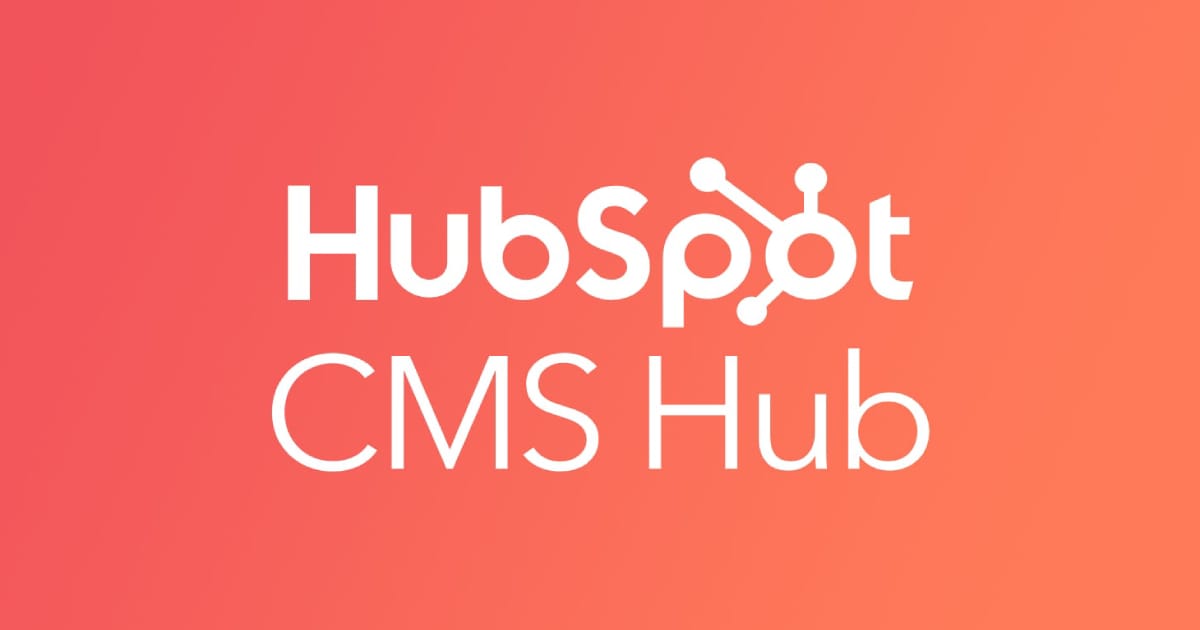
Overview and History
HubSpot CMS is an integrated platform designed to help businesses build and manage their websites with ease. Launched by HubSpot, a leading developer of software products for inbound marketing, sales, and customer service, the CMS ties seamlessly into its suite of tools, enabling users to create personalized, secure, and scalable websites. Its history dates back to HubSpot's inception in 2006, evolving from a simple inbound marketing tool to a comprehensive CMS platform. Over the years, it has gained popularity among marketers for its user-friendly interface, customizable templates, and advanced features like SEO recommendations, content staging, and adaptive testing. The CMS is particularly lauded for its ability to provide a unified customer experience, aligning website content and interactions with broader marketing, sales, and service efforts.
Key Features and Services
HubSpot CMS offers a range of key features and services designed to enhance website management and marketing efforts:
- Drag-and-Drop Editor: Enables non-technical users to easily create and edit web pages without needing to code.
- Responsive Design: Automatically adjusts content to fit any device, ensuring a seamless viewing experience on desktops, tablets, and smartphones.
- SEO Recommendations: Provides built-in tools and suggestions to optimize pages for search engines, helping to improve visibility and ranking.
- Content Personalization: Allows for the customization of website content for different visitors based on their behavior, device, location, or stage in the buying cycle.
- Integrated Analytics: Offers comprehensive analytics to track website performance, visitor engagement, and conversion rates, all within the HubSpot platform.
- Security Features: Includes SSL certification, web application firewall, and 24/7 security monitoring to protect websites against threats.
- Content Staging: Lets users make and test changes on a staging site before going live, ensuring updates are polished and effective.
- Adaptive Testing: Automates A/B testing, allowing users to compare different versions of a page to see which performs better.
- CRM Integration: Seamlessly connects with HubSpot’s CRM, enabling personalized interactions and streamlined lead management directly through the website.
- Customer Support: Provides access to a supportive community, extensive knowledge base, and professional customer service to assist users with any issues or questions.
Fees and Pricing Structure
HubSpot CMS offers various pricing tiers to cater to different needs and budgets, though specific fees can vary over time or based on additional services and customizations. Here's a general overview:
- Free Tier: HubSpot provides a basic level of access to its CMS features at no cost. This tier is suitable for small businesses or those just starting out, offering fundamental tools for website creation and management.
- Starter Plan: Aimed at small to medium-sized businesses, this plan introduces more advanced features and support options. Pricing historically starts at around $25 per month, providing a good balance between functionality and cost.
- Professional Plan: Designed for growing businesses that need more sophisticated marketing tools, the Professional plan includes full access to HubSpot’s marketing, sales, and service hubs, along with advanced CMS features. Pricing for this tier has typically started at around $400 to $800 per month.
- Enterprise Plan: This tier offers the most comprehensive set of features and support for large businesses or those with complex needs. It includes advanced security features, greater customization options, and extensive analytics. The Enterprise plan has historically started at approximately $1,200 to $3,200 per month.
It's important to note that these prices are subject to change and may not include additional costs like onboarding fees, which can vary depending on the level of support required. For the most accurate and current pricing information, it's best to consult directly with HubSpot or an authorized HubSpot partner.
Pros
- Integrated Platform: One of its biggest strengths is the seamless integration with the HubSpot ecosystem, including marketing, sales, CRM, and service hubs, providing a unified approach to manage all aspects of a business online.
- User-Friendly Interface: The CMS is designed with a focus on usability, featuring a drag-and-drop editor that makes it easy for non-technical users to create and manage web content.
- Personalization and Optimization Tools: Offers advanced tools for content personalization and SEO recommendations, helping businesses tailor their websites to their audience and improve search engine rankings.
- Comprehensive Analytics: Built-in analytics provide detailed insights into website performance, visitor behavior, and conversion tracking, all within the same platform.
- Security and Reliability: High-level security features including SSL, web application firewalls, and 24/7 monitoring, ensure that websites are protected against threats.
Cons
- Cost: While there's a free version, the more advanced features are locked behind higher-tier plans which can be costly for small businesses or startups.
- Complexity for Larger Sites: While great for small to medium-sized businesses, larger enterprises with very complex website needs might find the platform limiting compared to more customizable solutions.
- Learning Curve: Despite its user-friendly design, there's still a learning curve involved, especially for users who want to make the most out of all its advanced features and integrations.
- Dependence on the HubSpot Ecosystem: While integration is a strength, it can also be a limitation for businesses not fully invested in the HubSpot ecosystem, potentially leading to higher overall costs or integration challenges with external tools.
- Limited Customization in Lower Tiers: The lower-tier plans might not offer enough customization options for businesses with specific needs, pushing them towards more expensive plans.
Companies using HubSpot CMS
- Ducati
- Suzuki
- Trello
- SurveyMonkey
- DoorDash
- Atlassian
- VMware
- EOS
- Eventbrite
Salesforce CMS
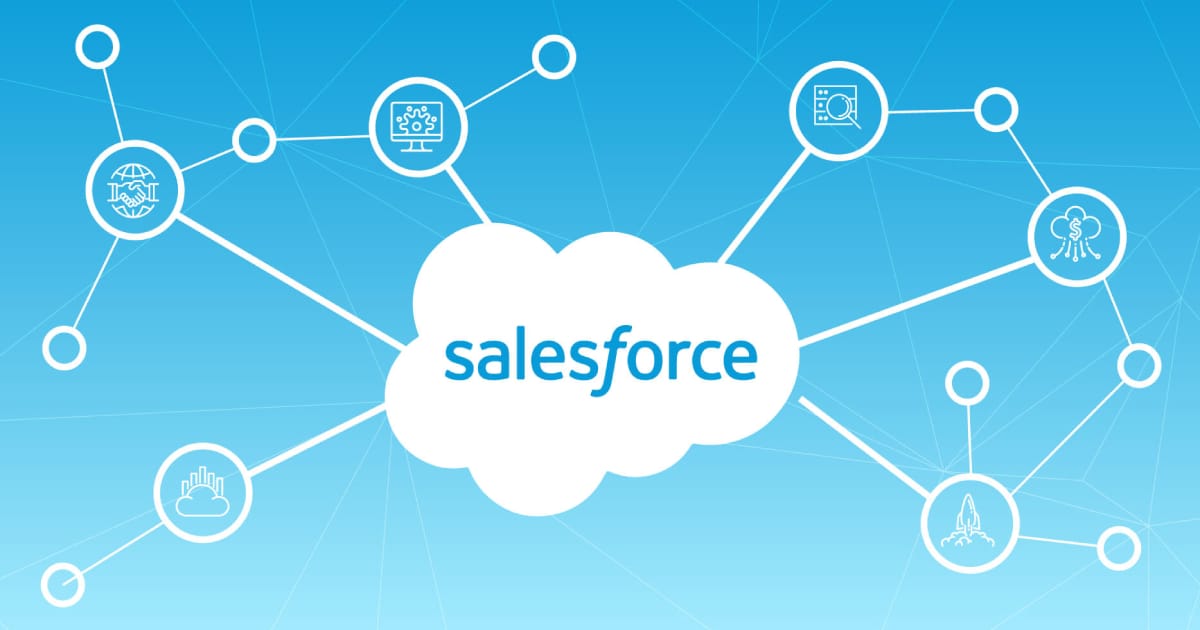
Overview and History
Salesforce CMS is a powerful content management system developed in 2019 by Salesforce, a global leader in customer relationship management (CRM) solutions. Introduced to help businesses create, manage, and deliver content across multiple channels, Salesforce CMS is designed with a user-friendly interface, allowing non-technical users to easily create engaging digital experiences. This platform supports various types of content, including news, blogs, images, and videos, making it versatile for different business needs. The history of Salesforce CMS reflects Salesforce's commitment to innovation and customer success. Over the years, Salesforce has continually updated its CMS to incorporate advanced features, such as AI-driven content recommendations and integration with other Salesforce Clouds, thereby enabling organizations to deliver personalized customer experiences at scale. This evolution signifies Salesforce's effort to provide a comprehensive and integrated suite of tools to support businesses in their digital transformation journeys.
Key Features and Services
Salesforce CMS offers a range of key features and services designed to empower businesses to create, manage, and deliver content seamlessly across multiple channels. Here are some of its standout features:
- Hybrid CMS: Salesforce CMS allows users to create content once and deliver it anywhere, supporting both headless and traditional CMS approaches. This flexibility enables businesses to use the content across different platforms and devices.
- Drag-and-Drop Interface: A user-friendly, drag-and-drop interface makes it easy for non-technical users to create and manage content without needing coding skills.
- Personalization: Leveraging Salesforce's AI capabilities, the CMS can deliver personalized content to users based on their behaviors, preferences, and past interactions.
- Multichannel Distribution: Salesforce CMS supports content delivery across various channels, including websites, mobile apps, and social media platforms, ensuring a consistent brand experience everywhere.
- Integration with Salesforce Ecosystem: The CMS is seamlessly integrated with other Salesforce solutions, such as Salesforce Commerce Cloud, Marketing Cloud, and Service Cloud, allowing for a unified approach to managing customer experiences.
- Content Management: Users can easily manage different types of content, including text, images, and videos, organizing them with tags and categories for efficient retrieval.
- Multi-Language Support: Salesforce CMS supports content creation and management in multiple languages, catering to global audiences and ensuring businesses can reach customers in their native language.
- Content Approval Workflow: The system includes workflows for content approval, ensuring that all content is reviewed and approved before being published, maintaining quality and brand consistency.
These features and services collectively make Salesforce CMS a powerful tool for businesses looking to streamline their content management processes and enhance their digital presence.
Fees and Pricing Structure
Salesforce CMS offers a range of key features designed to support content creation, management, and delivery across multiple channels. Here are some of its notable features and services:
- Content Creation and Management: Users can create, manage, and publish content directly within the Salesforce CMS without needing technical expertise. It supports various content types, including text, images, and videos.
- Multi-Channel Distribution: Salesforce CMS allows content to be easily distributed across different digital experiences, including websites, mobile apps, and email campaigns, ensuring a cohesive content strategy.
- Drag-and-Drop Interface: The platform features a user-friendly, drag-and-drop interface that simplifies the process of designing and organizing content layouts.
- Personalization and Targeting: Integration with Salesforce CRM enables personalized content delivery based on customer data, enhancing the user experience with tailored content.
- Multilingual Support: Salesforce CMS supports content creation and management in multiple languages, catering to global audiences.
- Integration with Salesforce Ecosystem: Seamless integration with other Salesforce solutions, such as Salesforce Commerce Cloud and Salesforce Marketing Cloud, enables businesses to leverage their content across various customer touchpoints.
Regarding the fees and pricing structure of Salesforce CMS, Salesforce typically offers various subscription plans tailored to different business needs and sizes. The pricing for Salesforce CMS can depend on several factors, including the number of users, the level of customization required, and the integration with other Salesforce products. Salesforce tends to customize its pricing based on the specific requirements of each business, so it's advisable to contact Salesforce directly or consult their website for the most accurate and up-to-date pricing information. Given the customizable nature of Salesforce's offerings, businesses can work with Salesforce representatives to create a package that best fits their needs and budget.
Pros
- Seamless Integration: Easily integrates with the Salesforce ecosystem, enhancing CRM capabilities and ensuring a unified customer experience across sales, marketing, and service platforms.
- User-Friendly Interface: Designed for users with varying technical skills, enabling non-developers to create, manage, and publish content effortlessly.
- Personalization: Leverages customer data from Salesforce CRM for personalized content delivery, improving engagement and customer satisfaction.
- Multi-Channel Distribution: Supports content delivery across various channels, including websites, mobile apps, and social media, ensuring consistent messaging.
- Multilingual Support: Facilitates content creation and management in multiple languages, catering to global audiences and expanding market reach.
Cons
- Cost: Can be expensive, especially for small businesses or those requiring extensive customization and integration with other Salesforce products.
- Complexity for Larger Implementations: While user-friendly, the platform can become complex as businesses scale up and integrate more Salesforce products, requiring more specialized knowledge.
- Limited Flexibility Outside Salesforce: Best suited for businesses already invested in the Salesforce ecosystem; those not using Salesforce may find it less flexible or beneficial compared to other CMS platforms.
- Learning Curve: Despite its user-friendly design, there can be a learning curve, especially for users unfamiliar with Salesforce products and services.
- Dependency on Salesforce Ecosystem: Businesses heavily reliant on Salesforce CMS may find themselves more deeply entrenched in the Salesforce ecosystem, which could limit options or increase costs in the long term.
Companies using Salesforce CMS
- Amazon Web Services
- U.S. Bank
- Toyota
- Macy's
- T-Mobile
- Aldo
- The New York Post
- American Express
- Canon
- Spotify
Oracle CMS
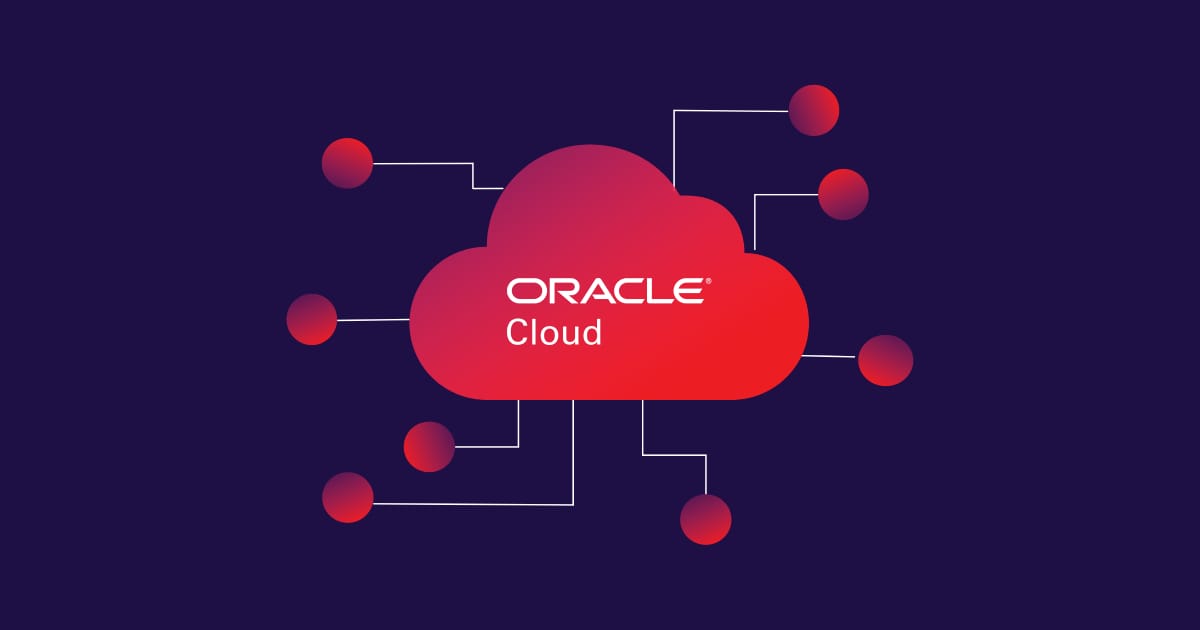
Overview and History
Oracle CMS is a sophisticated platform developed by Oracle Corporation, a leading technology company known for its comprehensive database solutions, software, and cloud services. The history of Oracle CMS dates back to the early 2000s when the internet began to transform the way businesses operate, leading to a surge in demand for robust, scalable content management systems that could handle the growing volume of digital content. Oracle CMS was designed to meet this demand, offering organizations a powerful tool to create, manage, and publish content across various digital channels efficiently. Over the years, Oracle has continuously evolved its CMS capabilities, integrating advanced features such as artificial intelligence, machine learning, and cloud-based services to support the dynamic needs of modern businesses. This ongoing innovation ensures that Oracle CMS remains at the forefront of content management technology, helping organizations worldwide to streamline their content processes and enhance their digital presence.
Key Features and Services
Oracle CMS, part of Oracle's extensive suite of cloud applications and platform services, offers a range of key features and services designed to streamline content management and delivery for businesses of all sizes. Here's an overview of its core offerings:
- Content Creation and Management: Users can easily create, manage, and modify content using a user-friendly interface. This includes text, images, videos, and other multimedia elements, with support for multiple content types and templates.
- Digital Asset Management (DAM): Oracle CMS provides robust DAM capabilities, enabling users to store, organize, and access digital assets efficiently. This includes advanced search features, tagging, and version control for better asset management.
- Multi-Channel Publishing: The system supports publishing across various channels, including websites, mobile apps, and social media platforms, ensuring a consistent content experience across all touchpoints.
- Personalization and Targeting: Oracle CMS leverages AI and machine learning to offer personalized content delivery, allowing businesses to tailor their content to individual user preferences and behavior for more engaging experiences.
- Collaboration Tools: Teams can collaborate effectively within the platform, with features such as task assignments, workflow management, and real-time editing and feedback.
- Integration and API Support: The platform offers extensive APIs and integration capabilities, enabling seamless connectivity with other business applications, such as CRM systems, e-commerce platforms, and analytics tools.
- Security and Compliance: Oracle CMS ensures high levels of security for content and data, including compliance with regulatory standards and best practices for data protection and privacy.
- Cloud Scalability: As a cloud-based solution, Oracle CMS offers scalability and reliability, with Oracle's global infrastructure ensuring high performance and availability for users worldwide.
These features and services make Oracle CMS a comprehensive solution for managing and delivering digital content, providing businesses with the tools they need to enhance their digital presence and engage with their audience effectively.
Fees and Pricing Structure
Oracle CMS, being part of Oracle's extensive portfolio of enterprise software and cloud solutions, typically follows a subscription-based pricing model, although specific details can vary based on the suite of features, services required, and the scale of deployment. As of my last update in April 2023, Oracle does not publicly list detailed pricing for its Content Management System on its website, as the fees can be highly customized to meet the specific needs of different organizations. However, here's a general overview of how the fees and pricing structure for such enterprise solutions might be configured:
- Subscription-Based Pricing: Oracle CMS likely offers monthly or annual subscription plans that provide access to the platform, with the cost varying depending on the level of functionality and the scale of use.
- Tiered Pricing: Pricing may be tiered based on the number of users, volume of content, or level of data usage, with higher tiers offering additional features, greater capacity, or enhanced support services.
- Add-On Features and Services: Additional fees might apply for optional features, integrations, or professional services such as advanced personalization, analytics, dedicated support, and training.
- Cloud Hosting Costs: Given that Oracle CMS is a cloud-based solution, there may be costs associated with cloud hosting, including storage, bandwidth, and data transfer fees, which can vary based on usage.
- Customization and Integration: Custom development, integration with existing systems, and implementation services could incur additional costs, depending on the complexity and scope of the work required.
To get the most accurate and up-to-date pricing information for Oracle CMS, it's best to contact Oracle directly or consult with an authorized Oracle partner. They can provide a tailored quote based on your organization's specific requirements, including the scale of your content management needs, the number of users, and any additional features or services you may need.
Pros
- Comprehensive Feature Set: Oracle CMS provides a wide array of content management features, including digital asset management, multi-channel publishing, and content personalization, making it a robust solution for complex content needs.
- Integration Capabilities: It offers strong integration options with other Oracle products and third-party systems, facilitating seamless workflows across different business applications, from CRM to marketing automation and beyond.
- Cloud-Based Efficiency: Being cloud-based, Oracle CMS allows for scalability, reliability, and accessibility from anywhere, enabling organizations to manage their content more efficiently without worrying about infrastructure constraints.
- Security and Compliance: Oracle is known for its emphasis on security and compliance, offering features that help organizations protect their content and adhere to various regulatory requirements.
- Global Support and Infrastructure: Oracle's global presence ensures that customers have access to comprehensive support and a reliable cloud infrastructure, enhancing the performance and availability of their content management system.
Cons
- Cost: Oracle CMS can be expensive, especially for small to medium-sized businesses. The comprehensive feature set and scalability come at a premium, which might be beyond the budget of smaller organizations.
- Complexity: The extensive functionality and integration capabilities can also make Oracle CMS complex to set up and manage, requiring specialized skills or additional training for users and administrators.
- Customization Limitations: While Oracle CMS is highly customizable, some organizations may find limitations in adapting it to highly specific or niche requirements without significant additional development or customization efforts.
- Learning Curve: Given its robustness and depth of features, there can be a significant learning curve for teams to fully leverage the platform's capabilities, potentially slowing down adoption and efficiency gains in the short term.
- Integration Complexity: While the integration capabilities are a strength, they can also pose challenges, as integrating with a wide range of systems and technologies may require substantial effort and technical expertise.
Companies using Oracle CMS
- Dropbox
- Overstock
- Zoom
- FedEx
- Xerox
- Panasonic
- Duke Energy
- Vodafone
- BT (British Telecom)
Choosing the Right Enterprise CMS

Selecting the appropriate enterprise CMS is a critical decision that hinges on several factors. Beyond the basic need for content management, businesses must consider their long-term digital strategy, including scalability, security, integration capabilities, and support for personalization and user engagement. The choice of CMS will significantly impact the ability to deliver engaging customer experiences, streamline operations, and achieve digital transformation goals.
When evaluating CMS options, consider the following:
- Scalability: Can the CMS accommodate your business's growth and evolving digital needs?
- Security: Does the platform provide robust security features to protect your content and customer data?
- Customization: How customizable is the CMS to meet your specific business requirements?
- Support and Community: Is there adequate support from the vendor and a community for troubleshooting and development?
- Integration: How well does the CMS integrate with other systems and technologies in your digital ecosystem?
Final Thoughts
The digital content world keeps changing quickly, so choosing the right enterprise CMS is more important than ever. This article looked at the top 5 enterprise CMS platforms, pointing out their strengths, weaknesses, and what makes each one unique. By carefully thinking about your business's specific needs and abilities of each platform, you can select a CMS that not only meets your current requirements but also supports your future growth and digital innovation plans. With the right enterprise CMS, your business can stay competitive, adaptable, and able to deliver great digital experiences to your customers.
This in-depth analysis aims to be a starting point for businesses beginning their digital transformation journey, providing insights to make an informed decision on which enterprise CMS platform best fits your unique needs. The right enterprise CMS allows your business to confidently move forward and succeed in the digital world. We specialize in building websites on these platforms—reach out to us for a consultation and let’s bring your digital vision to life.
Key Takeaways
| Platform | Integration | Flexibility | Pros | Cons |
|---|---|---|---|---|
| Adobe Experience Manager | Adobe ecosystem | High | Content & digital asset management | High complexity and cost |
| Sitecore | Multiple channels | High | Personalized experiences | Resource-intensive setup and maintenance |
| HubSpot CMS | HubSpot CRM | Medium | User-friendly & CRM integration | Limited advanced customization |
| Salesforce CMS | Salesforce products | Hybrid CMS | Content in CRM context | Can require deep integration knowledge |
| Oracle CMS | Oracle cloud services | API-first | Comprehensive cloud solution | May necessitate extensive Oracle product integration |





